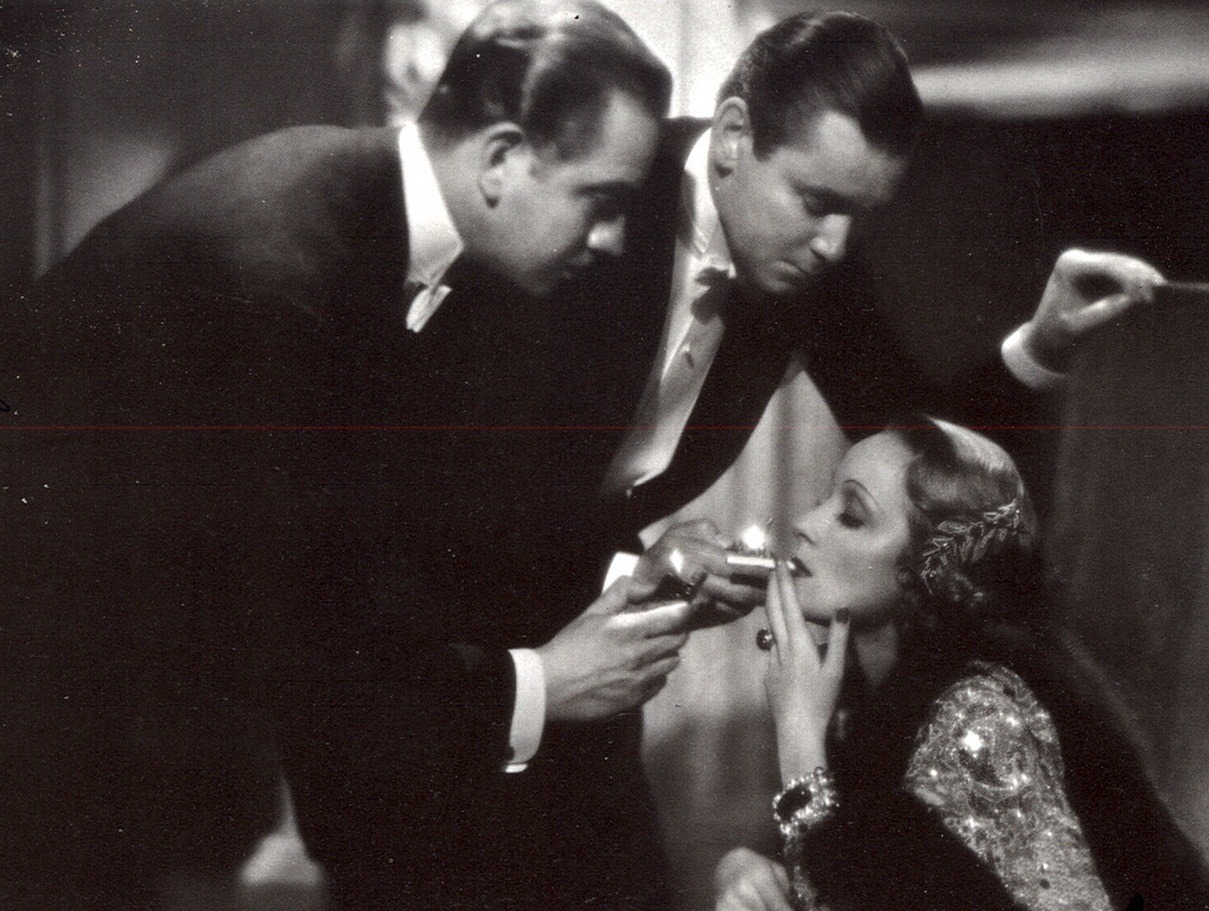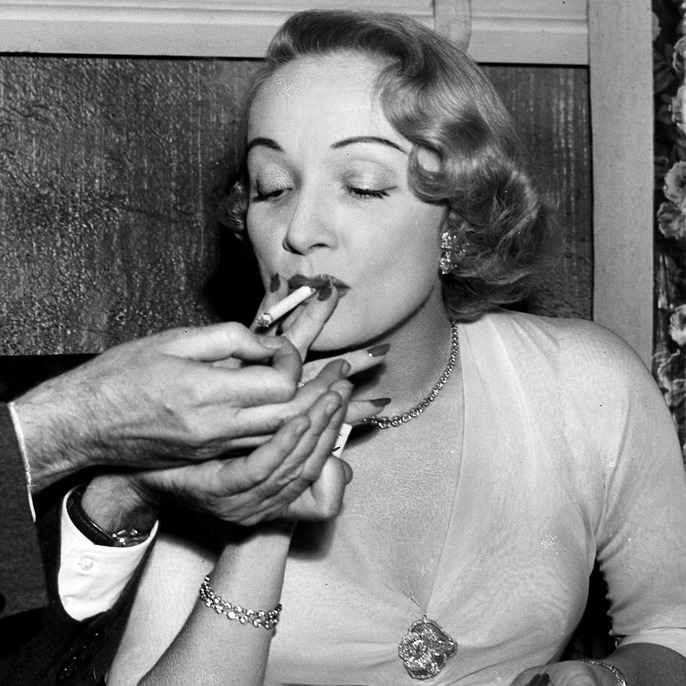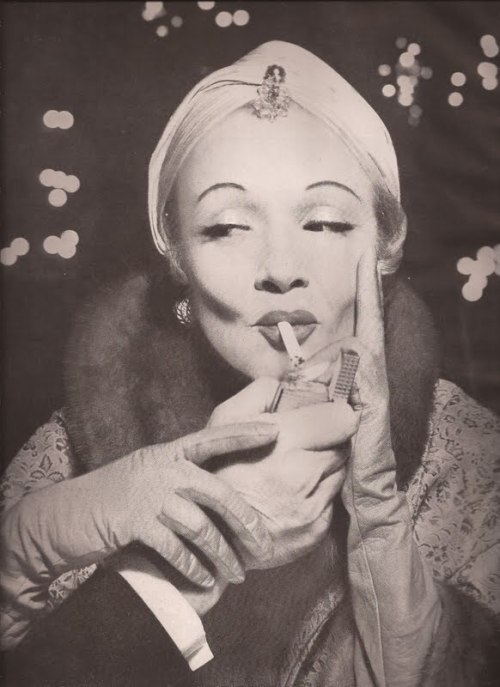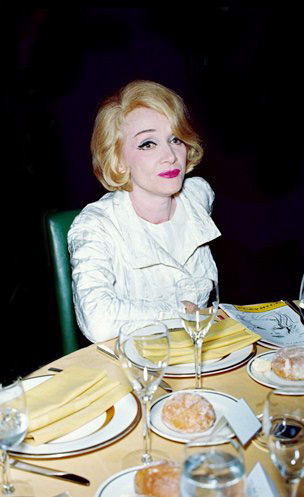Pages
24 September 2012
20 September 2012
"The Blue Angel" goes Blu
Posted by
missladiva
Kino Lorber have announced that they will be releasing The Blue Angel on blu-ray on 4 December. No word on whether this edition includes both the English and German versions (or extras, if any -- a running time of 124 minutes on a single disc is given by Amazon; this disc may well be Region A locked). It is available for preorder at amazon.comUniversum Film GmbH released the film on blu-ray in Europe (Region B, stated running time 107 minutes on German Amazon) on 31 August. Their version, according to a review on amazon.de, includes both the English and German versions, as well as the extras including Dietrich's screen test, interview and concert clips and a German commentary by Werner Sudendorf. According to Universum theirs is a two-disc edition.
19 September 2012
Is Dietrich Through? (2/2)
Posted by
missladiva
In their January 1933 edition the fan magazine, Photoplay, published an exclusive interview with Marlene by Ruth Biery. Dietrich's "startling statements" promised to answer the questions that "kept the public and studios agog". (We presented Part One of the interview on Monday.)
Her American life has not been happy. Her first year -- Mrs Von Sternberg's suit for alienation of affections. The suit was understandable from an wholly American viewpoint -- it was completely a puzzle from Marlene's European one. She had a husband. He understood. Why should not Mr Von Sternberg's wife do the same? she reasoned. Incidentally, I have known both Marlene and Von Sternberg since she first came and I have always said both in print and in person that Marlene's devotion has always been as she now explains it.
A mental and, to her, common sense one. Then -- the fight on "Blonde Venus". Von Sternberg did not want to direct it. The studio wished to make the story saccharine. He bolted. Richard Wallace was assigned as director. She bolted. You now know why. Von Sternberg really went back and directed that picture for the sake of Marlene. He hated it then -- he hates it now. And no man can do a truly great picture with a story which he hates.
And then -- the kidnapping threats for her baby. Any description of her suffering would sound like an exaggeration. That Marlene Dietrich has a mother complex, no American would question. To her, the extend of her love is is only as natural as her refusal to be directed by any man other than the one who bridged the screen chasm for her. The letters she received were made up of words clipped from newspapers to avoid trace of handwriting. People said it was a joke.
They continued for six weeks. Each new letter showed a new knowledge of her movements. Why had she hired detectives? Why had she taken her child to such and such a place the day before? Marlene Dietrich was close to a mad woman. Neither she nor her child even now stir in the open today without armed guards.
The bars on the windows of her home are inches thick.
PART TWO: AN UNDERSTANDING HUSBAND
Her American life has not been happy. Her first year -- Mrs Von Sternberg's suit for alienation of affections. The suit was understandable from an wholly American viewpoint -- it was completely a puzzle from Marlene's European one. She had a husband. He understood. Why should not Mr Von Sternberg's wife do the same? she reasoned. Incidentally, I have known both Marlene and Von Sternberg since she first came and I have always said both in print and in person that Marlene's devotion has always been as she now explains it.
A mental and, to her, common sense one. Then -- the fight on "Blonde Venus". Von Sternberg did not want to direct it. The studio wished to make the story saccharine. He bolted. Richard Wallace was assigned as director. She bolted. You now know why. Von Sternberg really went back and directed that picture for the sake of Marlene. He hated it then -- he hates it now. And no man can do a truly great picture with a story which he hates.
And then -- the kidnapping threats for her baby. Any description of her suffering would sound like an exaggeration. That Marlene Dietrich has a mother complex, no American would question. To her, the extend of her love is is only as natural as her refusal to be directed by any man other than the one who bridged the screen chasm for her. The letters she received were made up of words clipped from newspapers to avoid trace of handwriting. People said it was a joke.
They continued for six weeks. Each new letter showed a new knowledge of her movements. Why had she hired detectives? Why had she taken her child to such and such a place the day before? Marlene Dietrich was close to a mad woman. Neither she nor her child even now stir in the open today without armed guards.
The bars on the windows of her home are inches thick.
17 September 2012
Is Dietrich Through? (1/2)
Posted by
missladiva
In their January 1933 edition the fan magazine, Photoplay, published an exclusive interview with Marlene by Ruth Biery. Dietrich's "startling statements" promised to answer the questions that "kept the public and studios agog".
HOLLYWOOD is eagerly discussing Marlene Dietrich and her problems.
Her contract with Paramount is finished in February. Will she re-sign? Will she make pictures with other directors than Von Sternberg? Will she remain in this country or return to Europe as has been rumoured? That Maurice Chevalier gossip? What was behind the seeming unfriendliness between herself and Von Sternberg?
What was ll that fuss about the kidnapping of her daughter? Was this just another publicity racket?
Literally hundreds of curious, anxious questions.
Marlene has not granted an interview for seven months.
She has remained isolated behind her forbidden guard of nine detectives. Yes, I said NINE. Neither Marlene nor her daughter has moved without the protection of armed guards for many, many weeks. She had added what threatened to be an indefinite silence to her well-managed defense.
But now she has broken that silence. "It is right that the American people who have been kind enough to see my pictures should know and understand. It is right that I, myself, should tell them."
PART ONE: "PLEASE MAKE MR VON STERNBERG DO IT"
HOLLYWOOD is eagerly discussing Marlene Dietrich and her problems.
Her contract with Paramount is finished in February. Will she re-sign? Will she make pictures with other directors than Von Sternberg? Will she remain in this country or return to Europe as has been rumoured? That Maurice Chevalier gossip? What was behind the seeming unfriendliness between herself and Von Sternberg?
What was ll that fuss about the kidnapping of her daughter? Was this just another publicity racket?
Literally hundreds of curious, anxious questions.
Marlene has not granted an interview for seven months.
She has remained isolated behind her forbidden guard of nine detectives. Yes, I said NINE. Neither Marlene nor her daughter has moved without the protection of armed guards for many, many weeks. She had added what threatened to be an indefinite silence to her well-managed defense.
But now she has broken that silence. "It is right that the American people who have been kind enough to see my pictures should know and understand. It is right that I, myself, should tell them."
12 September 2012
Cornel Lucas Exhibition @ Fiorentini + Baker
Posted by
Joseph
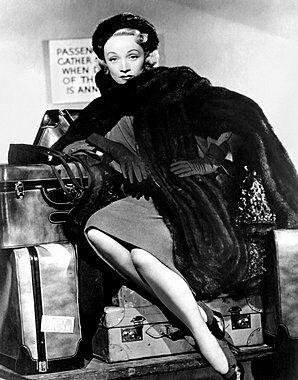 |
| My favorite Lucas shot--just a little flirtier than the more famous one exhibited |
As you will see, Dietrich is the star of the show at this exhibition and on Lucas' website. Time LightBox even features Marlene's face and Cornel's memories of her, another testimony of her perfectionism and directorial tendencies.
Funnily enough, Fiorentini + Baker is a shoe shop, and many of Lucas' images feature his subjects flaunting their footwear, including one of Dietrich on their flyer! Time LightBox also informs us that this is the first Lucas exhibition in New York, and I can't think of a more appropriate way for him to get his foot in the door.
Now, here's my question for you Dietrich scholars. Should these portraits of her be dated 1948? I thought they were taken for No Highway in the Sky, which was in production from October 1950-January 1951. Also, were they works made for hire (e.g., for 20th Century-Fox) or did Lucas take them as an independent contractor?
07 September 2012
Earl Wilson's Vintage Gossip Bites: The Broadway Edition
Posted by
missladiva
At The Last Goddess, we devour good gossip; below are some tasty morsels from New York-based Earl Wilson's syndicated column, written at the time of Marlene's two Broadway triumphs in 1967 and 1968:
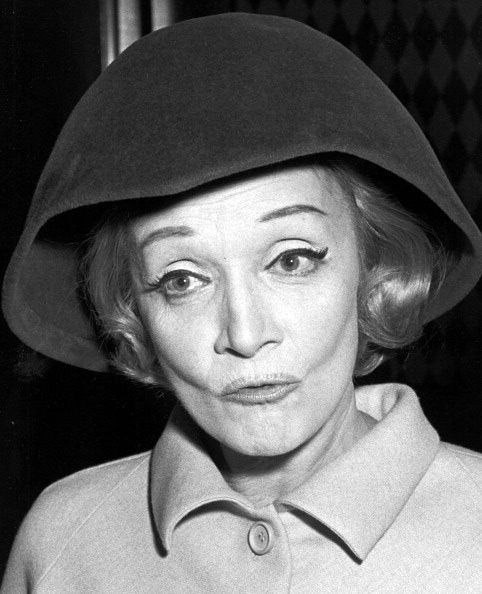 MONTREAL -- Maurice Chevalier, "a very happy old man" in his own words, delivered himself of the provocative opinion here the other day that "Marlene Dietrich had the guts that Greta Garbo never had" in continuing her career and that Garbo "must not be very gay now not working." ... "I don't approve of Garbo not working," Chevalier said. "she got so scared because something she did went wrong, and she didn't dare to come back, and she has refused everything. If she had kept working she would still be the great Garbo, whereas now Dietrich is greater than Garbo. She would have had to take older parts so she would be the great old lady of the screen. It is better to be a great old lady than just a souvenir." Chevalier was sure that Marlene -- "who has a lot of guts and it's surprising to find guts in one so feminine" -- will be a big hit in her one-woman singing, dancing show which, he pointed out, "is not her profession, but a new one for her". (5 August 1967)
MONTREAL -- Maurice Chevalier, "a very happy old man" in his own words, delivered himself of the provocative opinion here the other day that "Marlene Dietrich had the guts that Greta Garbo never had" in continuing her career and that Garbo "must not be very gay now not working." ... "I don't approve of Garbo not working," Chevalier said. "she got so scared because something she did went wrong, and she didn't dare to come back, and she has refused everything. If she had kept working she would still be the great Garbo, whereas now Dietrich is greater than Garbo. She would have had to take older parts so she would be the great old lady of the screen. It is better to be a great old lady than just a souvenir." Chevalier was sure that Marlene -- "who has a lot of guts and it's surprising to find guts in one so feminine" -- will be a big hit in her one-woman singing, dancing show which, he pointed out, "is not her profession, but a new one for her". (5 August 1967)- Marlene Dietrich insists upon a special stage door watchman for her one woman show, to protect a gown allegedly costing $ 50,000. Advance word is that she's so good and lovely, that "she performs for an hour and 20 minutes, then takes bows for 40 minutes". (9 October 1967)
- Marlene Dietrich was escorted to El Morocco the other morning by Lord Snowdon, Princess Margaret's husband who is here on business, and Alexander Lieberman of Vogue, and Mrs Lieberman. For supper (or breakfast) they had scrambled eggs with red wine. Several beautiful woman such as Mrs Pat Uchitel were there, and I asked what they noticed. They replied, "Marlene's figure." ... "Isn't she TOO thin?" asked somebody near me ... "A woman," they shrieked, is NEVER too thin!" (Is that right?) (24 October 1967)
- Marlene Dietrich rejected a 50Gs-a-week offer from Miami Beach Deauville, "but I'd like to vacation there". (18 November 1967)
- Marlene Dietrich told the Billy Reeds she'll go into white tie and tails again when she does Die Fledermaus in Vienna next summer. (19 November 1967)
- Marlene Dietrich shelved a return to NY -- but may play Osaka, Japan, Fair in the mid-1970s. (25 January 1968)
- The Marlene Dietrich triumphal return had some light moments. The "white mink" floor-length coat -- or was it ermine? -- turned out to be swans' down (from the belly of a swan), and it was gorgeous, and I may start breeding swans ... Producer Alexander H. Cohen was funny when I mentioned to him that one bouquet-thrower, who also threw love beads, which Marlene promptly put on, was working both aisles, flinging flowers from one side to the other, and was later seen backstage. "Those flowers cost me a lot of money," joked Producer Cohen, "and Marlene won't let me use them twice." Marlene wore a Jean Louis silk net gown with bugle beads and crystals -- and now jewelry -- and as she took her short little hobble-skirted steps across the stage, bowed the deepest, prettiest bow in history, and waived from the parted red curtains, we thought she is the greatest showman of our time. (10 October 1968)
02 September 2012
Marlene '59
Posted by
missladiva
When Marlene opened at the Sahara Hotel's Conga Room in May 1959, she gave 'em legs -- and feathers. Her dress, a beaded Jean Louis number with a thigh-high slit, was topped with extravagant yellow plumage. (The costume also came in sedate black, but photos of Dietrich wearing it in actual performance are hen's teeth).
She sang her usual suspects but included an odd repertoire choice: Johnny Cash's "Don't Take Your Gun To Town".
In 1959, Marlene also announced her TV debut. Press were told that her upcoming performances in Paris would be filmed in colour, directed by Orson Welles. In the end, the special -- a French-language performance filmed for an American TV audience -- didn't happen, but Marlene did make her TV debut that year, without fuss, while on tour in Brazil.
 |
| Marlene Dietrich at the Sahara Hotel, 1959. |
She sang her usual suspects but included an odd repertoire choice: Johnny Cash's "Don't Take Your Gun To Town".
In 1959, Marlene also announced her TV debut. Press were told that her upcoming performances in Paris would be filmed in colour, directed by Orson Welles. In the end, the special -- a French-language performance filmed for an American TV audience -- didn't happen, but Marlene did make her TV debut that year, without fuss, while on tour in Brazil.
 |
| Marlene makes her TV debut on Brazil's TV Tupi. With host, Jayce Campos (1959). |
The show, on the TV-TUPI channel, was presented by Jayce Campos. Dietrich appeared in her top hat and tails to sing "The Boys in the Backroom" and "Falling in Love Again". After some chat, she changed into a dress for a final number.
Although it is a studio recording with overdubbed applause, the LP, Dietrich in Rio gives a good representation of the material Marlene sang on her South American Tour.
South American exuberance gave way to Parisian jubilation when Marlene performed at the Théâtre de l'Étoile in November. Orson Welles came for the opening, as did Jean Cocteau and Noel Coward. Coward thought Marlene too brassy, but liked her rendition of "One For My Baby":
(The entire performance, including Maurice Chevalier's introduction, is available as a digital download on itunes. Although the sound quality is sub-par, it is an interesting historical artifact.)
Subscribe to:
Posts (Atom)


